Abstract
North Korea’s vegetable production, especially cabbage, is the largest, with production reaching 699,000 tons (kt) in 2022. Cabbage is a staple vegetable that is widely consumed throughout Japan, and is produced to meet demand especially from autumn to winter. For this reason, cabbage cultivation occupies a relatively large area of land and accounts for an important part of agricultural land use. Tomatoes are also often classified by their use, and in North Korea they are mainly divided into those for eating raw and those for processing. Tomatoes for processing are often processed into canned goods, pickles, sauces, etc., as their preservability is important, especially during times of food shortages. This type of processing production is positioned as part of the nation’s food security. The trend over the past few years has been a steady increase in production of staple vegetables such as cabbage and tomatoes, amid ongoing collectivization of agriculture and land reform. However, due to the effects of climate change and resource shortages, agricultural production still faces many challenges.
Production (by vegetables)
A distinctive trend in vegetable production in North Korea is evident in the fluctuations in cabbage production from 1961 to 2022. Cabbage production peaked at 1 million tonnes (Mt) in 1990, but has since declined, remaining at approximately 69.9% of its peak volume in 2022. The decline is thought to be due to economic difficulties, a shortage of agricultural resources, natural disasters, and other factors. In the 1990s, as part of North Korea’s agricultural policy, cultivation of crops including cabbage was strengthened, and production was promoted, especially on collective farms. However, the food crisis in the late 1990s and subsequent economic difficulties affected production, leading to a decline in the production of many agricultural products, including cabbage. In recent years, land degradation, fertilizer shortages, and slow mechanization have hindered improvements in productivity, making it difficult to ensure a stable supply. Nevertheless, cabbage remains an important crop and is widely consumed as a national staple food. Although production volumes are currently expected to recover, it is expected that it will take time to recreate past peaks due to resource shortages and climate change.
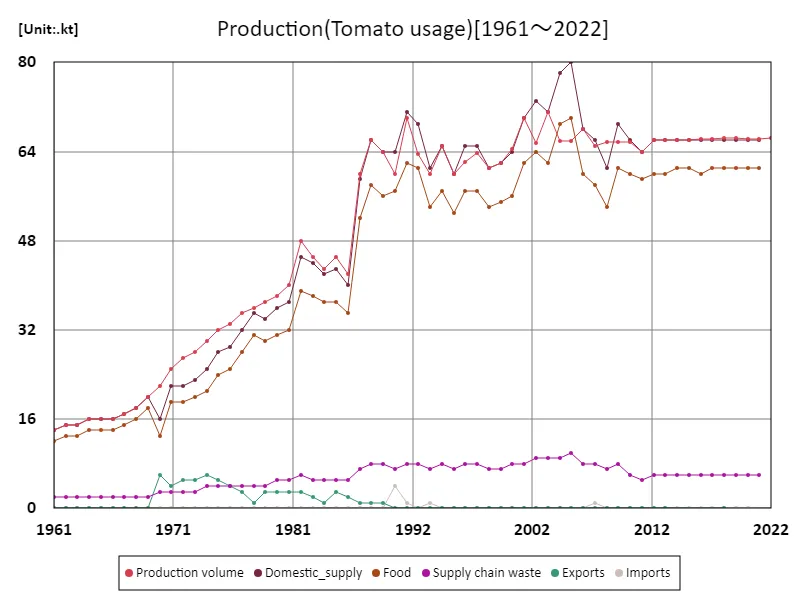

The maximum is 80kt[2005] of Domestic_supply, and the current value is about 82.5%
Yield(by vegetable)
Yield variations in vegetable production in North Korea are particularly pronounced for cabbage. The peak cabbage yield recorded in 1978 was 30 tonnes per hectare (t/ha), but current production is only 81.4% of that. The reasons behind this decline are thought to be economic difficulties, resource shortages, and limitations in agricultural technology. The late 1970s was a time when North Korea was strengthening its agricultural production, mainly through collective farms, and the production of staple vegetables such as cabbage improved rapidly. However, since the 1980s, agricultural productivity has declined due to economic sanctions, a shortage of agricultural resources, and natural disasters. Cabbage in particular requires advanced cultivation techniques and large amounts of fertilizer, so a lack of fertilizer and land degradation have led to a decrease in production. Although current yields have declined from their peak, cabbage remains an important crop in the country and one of the main pillars of the food supply. In recent years, efforts have been made to improve agricultural technology and soil quality to make farming more efficient, and it is hoped that productivity will gradually recover. However, as the economy remains heavily dependent on the external environment and resource supplies, a sustained recovery is expected to take time.
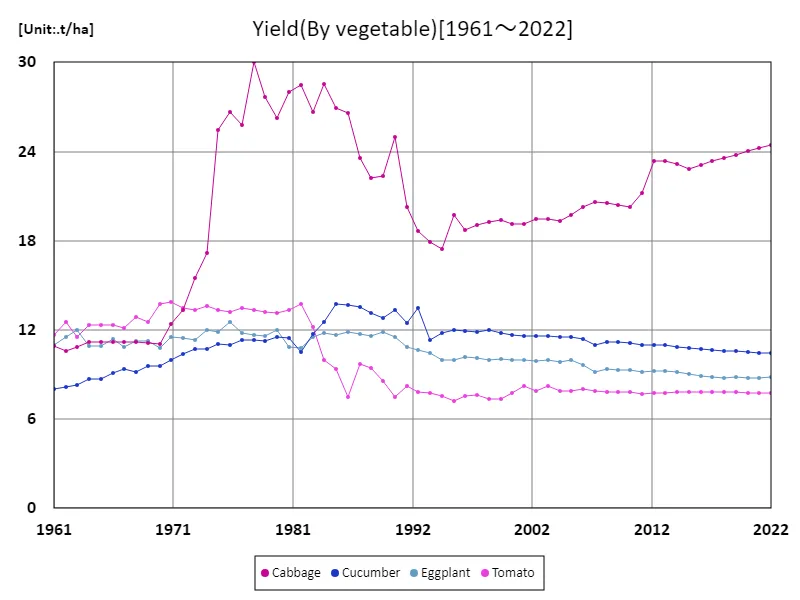

The maximum is 30t/ha[1978] of Cabbage, and the current value is about 81.4%
Land use (by vegetables)
Data on vegetable land use in North Korea in 2022 shows that cabbage is the most widely cultivated crop. The area cultivated with cabbage reaches 28,600 hectares (kha), which is the largest among all land uses. In comparison, the average area for all vegetables is 12.3kha and the total area is 49.2kha. This trend indicates that cabbage is the most important food crop in North Korea, accounting for the majority of domestic consumption. The increase in the area under cabbage cultivation may be influenced by agricultural collectivization and state agricultural policies. Thanks to efficient cultivation, especially on collective farms, cabbage has come to be positioned as a staple vegetable with a stable supply. However, in recent years, land degradation, resource shortages, and concerns about fertilizer supplies have led to a gradual decline in the area of cabbage production. Additionally, because cabbage takes up a much larger area than other vegetables, future agricultural policies are likely to revolve around cabbage, but efforts to diversify farmland and improve soil quality will also be required. In order to achieve sustainable agriculture, efficient land use and resource management are important issues.
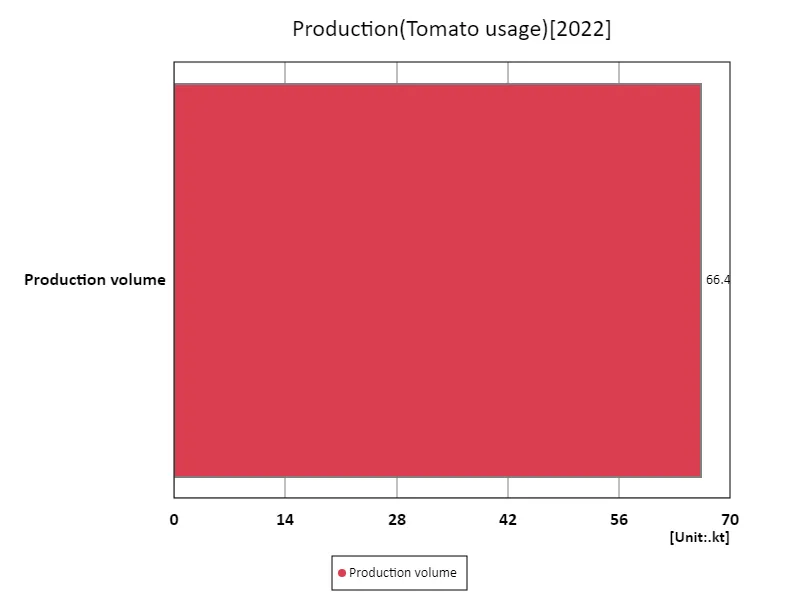

The maximum is 66.4kt of Production volume, the average is 66.4kt, and the total is 66.4kt
Tomato usage
North Korea’s tomato production by use trends are heavily dependent on domestic supply. Based on data from 1961, the largest use of tomatoes was for domestic supply, with production reaching 80 thousand tons (kt), indicating the important position of tomato production in North Korea. During this period, tomatoes were primarily consumed as fresh vegetables, but there was also a certain demand for processing. Subsequently, North Korea’s agricultural policies affected the production of many agricultural products due to economic constraints and resource shortages, but tomatoes continued to be cultivated as one of the important crops. Tomatoes, in particular, are long-lasting and therefore play an important role in securing food during the winter. There has been an increase in the supply of canned goods, sauces, pickles, and other products that utilize processing technologies. Currently, tomato production volume is maintaining its peak level, but a large portion is still diverted to domestic supply to meet domestic demand. Furthermore, with the growing trend towards self-sufficiency in recent years and the need for more efficient agricultural production and improved technology, there are high hopes for an expansion of tomato production. More efficient land use and improved irrigation techniques are essential to overcome agricultural resource constraints.
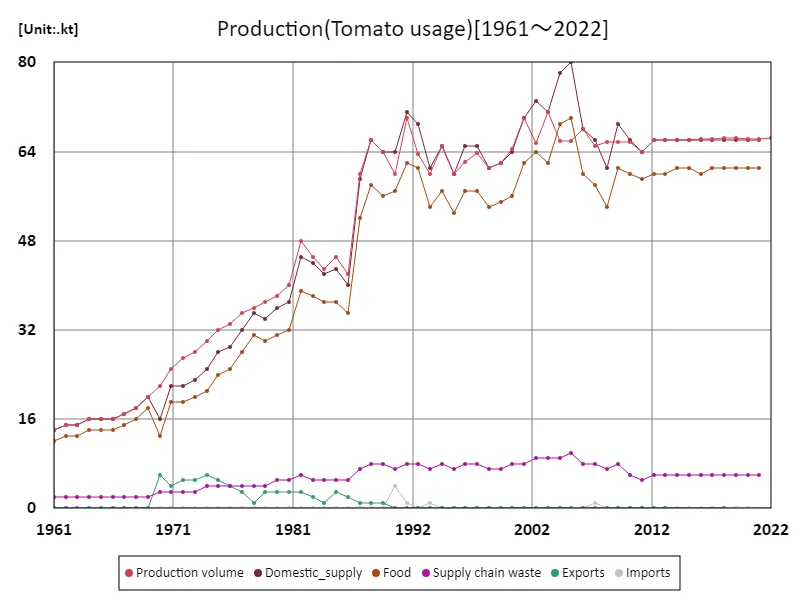

The maximum is 80kt[2005] of Domestic_supply, and the current value is about 82.5%
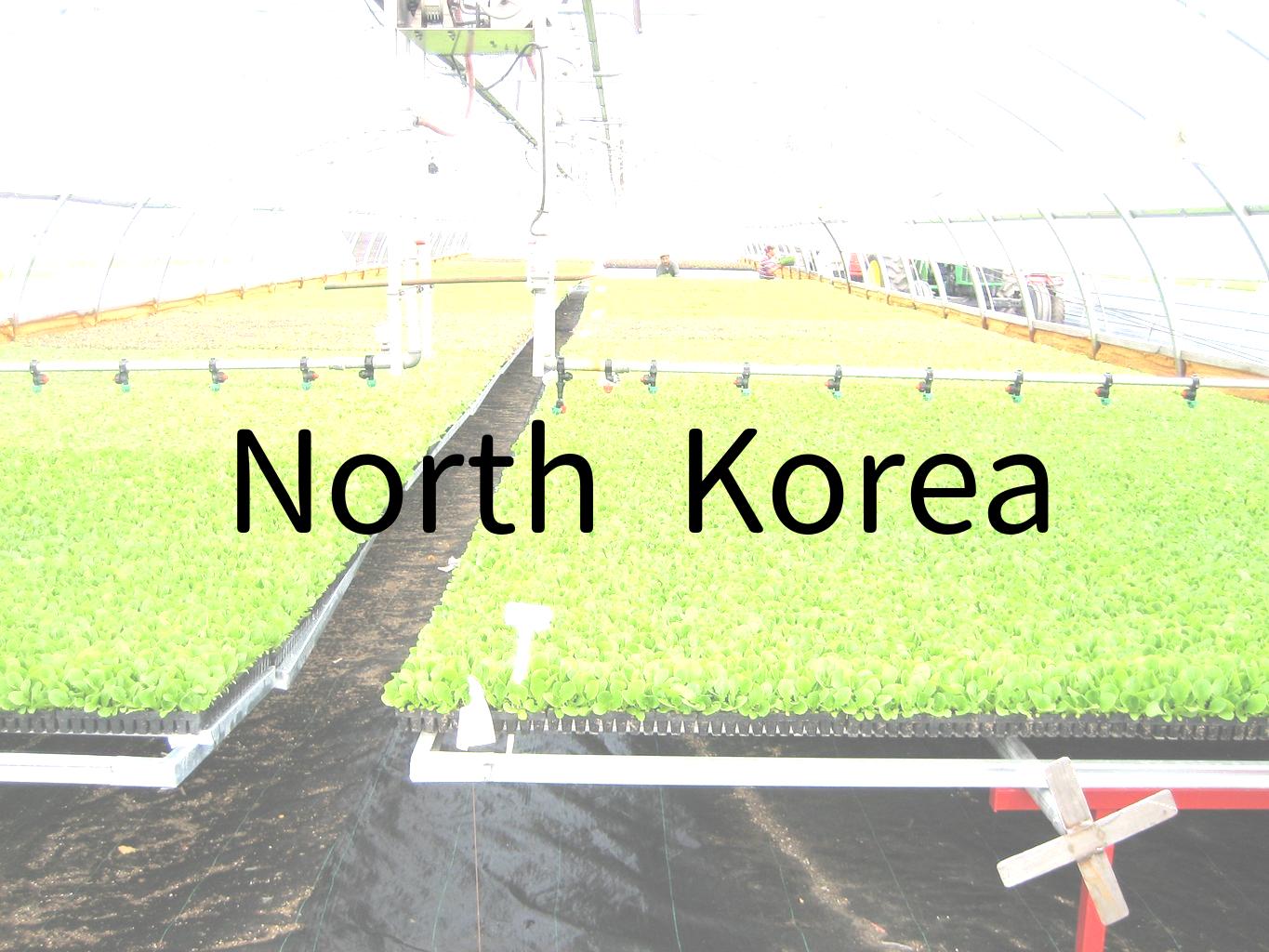


Comments